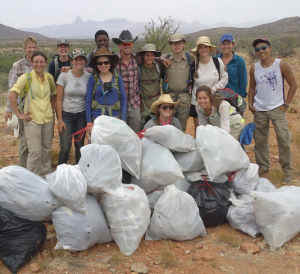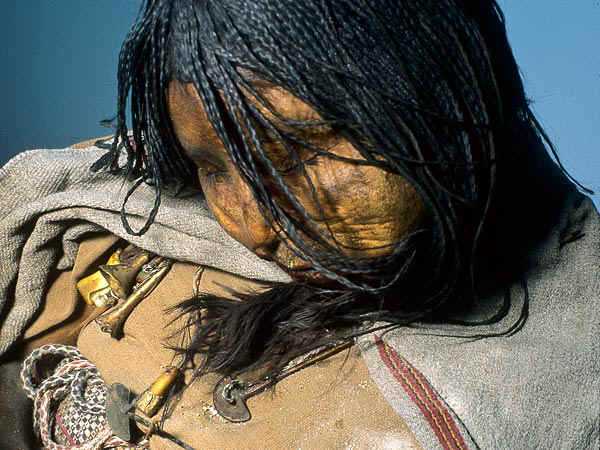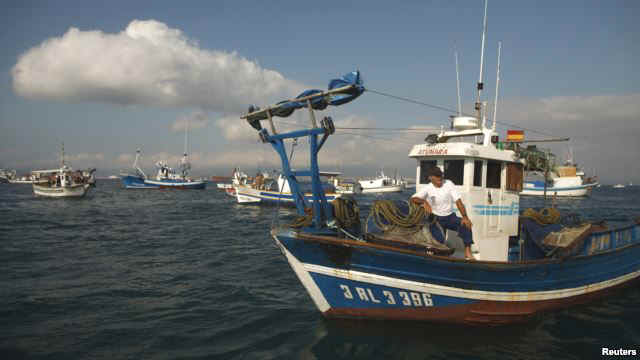|
Using family papers, local chronicles, and scholarly works, de la Garza
tells the story of the Republic of the Rio Grande and its people from
the perspective of individuals who lived in this region from the
mid-eighteenth to the mid-twentieth century. Jack and Doris Smothers
Series in Texas History, Life, and Culture, Number Thirty-five, March
2013. $45.00$30.15 33% website discount price Hardcover 6 x 9 | 255 pp.
| 28 b&w photos, 1 maps ISBN: 978-0-292-71453-3
Description
The
Republic of the Rio Grande had a brief and tenuous existence
(18381840) before most of it was reabsorbed by Mexico and the
remainder annexed by the United States, yet this region that straddles
the Rio Grande has retained its distinctive cultural identity to the
present day. Born on one side of the Rio Grande and raised on the other,
Beatriz de la Garza is a product of this region. Her birthplace and its
people are the subjects of this work, which fuses family memoir and
borderlands history. From the Republic of the Rio Grande brings new
insights and information to the study of transnational cultures by
drawing from family papers supplemented by other original sources, local
chronicles, and scholarly works. De la Garza has fashioned a history of
this area from the perspective of individuals involved in the events
recounted. The book is composed of nine sections spanning some two
hundred years, beginning in the mid-1700s. Each section covers not only
a chronological period but also a particular theme relating to the
history of the region. De la Garza takes a personal approach, opening
most sections with an individual observation or experience that leads to
the central motif, whether this is the shared identity of the
inhabitants, their pride in their biculturalism and bilingualism, or
their deep attachment to the land of their ancestors.
Contents
Preface
and Acknowledgments
Chapter 1. The Republic of the Rio Grande
Chapter 2. The Kingdom of Zapata
Chapter 3. Grandfather's Revolution: The Horseman
Chapter 4. Grandfather's Revolution: The Historian
Chapter 5. The Prodigal
Chapter 6. "You and I Will Die of Love"
Chapter 7. "Not a Stone upon a Stone"
Chapter 8. The Streets of Laredo
Chapter 9. Voyages in English
Works Cited
Index
Author
By
Beatriz de la Garza Beatriz de la Garza is an attorney and writer. Her
previous books are A Law for the Lion, The Candy Vendors Boy and
Other Stories, and Pillars of Gold and Silver.
Awards
The
Jim Parish Award for Documentation and Publication of Local and Regional
History, sponsored by the Webb County Heritage Foundation.
Excerpts
The
Republic of the Rio Grande As a child, I dreaded the occasions when my
aunts would pack me off to visit my maternal grandmother, for as soon as
she saw me, her bright blue eyes, which reminded me of playing marbles,
would fill with tears, and she would clasp me tightly to her bosom. Her
reaction disturbed me profoundly because I did not understand it, but
now I know that my presence reminded her of the loss of her
daughtermy mother. I also know now that I reminded her of herself as
a child and that she realized that our liveshers and mineran in
sad parallels, a case of history repeating itself, but in a mirror.
When
my grandmother, who was born in Zapata County, in South Texas, was
orphaned at an early age, she went to live with her paternal aunts
across the Rio Grande, in Guerrero (the former Revilla). There she grew
into womanhood, married, and had her children. When I, born in northern
Mexico, in Ciudad Guerrero, Tamaulipas (now Guerrero Viejo, or Old
Guerrero), was left an orphan by age six, I moved with my paternal aunts
to Laredo, in South Texas, where I grew up. What was perhaps the most
remarkable feature of our two parallel lives was that, in crossing the
Rio Grande in opposite directions, neither my grandmother nor I felt
that we had moved to a foreign country. And, indeed, we had not, for we
had remained within the confines of the old Republic of the Rio Grande.
Yes,
there was such a place for a brief, if not altogether shining, moment
(the years 1839 to 1840, more or less), when the people of the lower Rio
Grande settlements and their neighbors struggled to assert their
autonomy against two countriesthe Republic of Mexico and the newly
declared Republic of Texas. The insurgent areas encompassed the northern
Mexican states of Tamaulipas (the former province of Nuevo Santander,
which had included Texas, south of the Nueces River), Nuevo León, and
Coahuila. The call for insurrection first sounded in Camargo, Tamaulipas,
traveled up river to Guerrero, and was quickly taken up in Laredo, where
the new government of the Frontera del Norte (Northern Frontier), later
known as the Republic of the Rio Grande, established its capital and
designated one of the principal houses on the main square, San Agustín
Plaza, as the capitol.
It
was natural that Laredo and the downriver settlements should link their
destinies in this endeavor, as they had done in earlier days, since they
owed their existence to a common impetusthe Spanish colonization of
the banks of the lower Rio Grande by Don José de Escandón during the
middle of the eighteenth century. For more than two hundred years after
the Spaniards had first set foot on the shores of the mouth of the Rio
Grande, the northern part of Nuevo Santander remained out of Spanish
reach. The Spaniards had been more successful in colonizing the area
around the source of the river (primarily in northern New Mexico) than
where it emptied. Where the river met the sea and for some two hundred
miles upstream remained a land populated by "tigers, leopards,
wolves . . . and snakes . . . the last-named being abundant". The
human inhabitants were no less hostile, among them the fierce
Coahuiltecans, related to the cannibalistic Karankawas. Several times,
beginning in the 1500s, the Spaniards had attempted to colonize this
area, which they called el seno mexicano (in this instance, seno meaning
a gulf or a cavity), and several times they had failed. Success did not
come until the colonization project was entrusted to Don José de Escandón,
the Count of Sierra Gorda, in 1746. Escandón had arrived in Yucatán
from his native Spain as a fifteen-year-old and enlisted as a cavalry
cadet. By 1740 he had been promoted to lieutenant general as a reward
for having pacified the indigenous tribes of the Sierra Gorda, in the
Sierra Madre Oriental of Mexico. It was from this campaign that he took
the title of Count of Sierra Gorda when he was later ennobled by the
Spanish sovereign.
According
to Galen D. Greaser, in his excellent introduction to the New Guide to
Spanish and Mexican Land Grants in South Texas, the successful
colonization of Nuevo Santander was due, not only to Escandón's
"tireless industry and resourcefulness," but also to the
"loyal captains he selected for the new settlements."
Ultimately, though, these settlements took hold because of the people
who put down roots in the towns founded under Escandón's direction:
"Escandón's reliance on frontier families rather than on
missionaries and soldiers to carry forward the colonization venture was
justified." Greaser adds: "The results confirmed Escandón's
belief that towns were better vehicles of colonization than missions or
presidios".
Escandón's
plan called for multiple caravans, or entradas, of soldier-settlers to
converge at the mouth of the Rio Grande from seven points on the
frontier in early 1747, and, surprisingly, most did converge.
Reconnoitering the south bank of the Rio Grande, Escandón noted also
its tributariesthe Salado, the Alamo, and the San Juan riversfor
he hoped to establish settlements at their junctions with the Rio
Grande, and he did. In all, Escandón founded some twenty settlements in
what he called Nuevo Santander. Of these, some of his most successful
were the four villages that he founded on the southern/western side of
the Rio GrandeCamargo and Reynosa in 1749, Revilla in 1750, and Mier
in 1752. The fifth village, Laredo, was the only one founded on the
eastern/northern bank of the Rio Grande.
The
five villages came to be known as Las Villas del Norte, and for their
settlement Escandón attracted enterprising ranchers from the
neighboring provinces of Nuevo León and Coahuila. These men, in turn,
brought their own retainers and their families to populate the villages,
as well as the flocks of sheep and herds of cattle and horses that were
to form the economic basis of the new region. José María and Miguel de
la Garza Falcón settled Camargo. Carlos Cantú founded Reynosa and,
like his counterparts in the other settlements, took an oath to defend
his village. Vicente Guerra, a prominent rancher from Coahuila, offered
to settle twenty-six families at his own expense and did so in what
became Revilla (named after the then viceroy of Mexico, the Count of
Revillagigedo). José Florencio Chapa was in charge of the fifty-seven
families that settled on the banks of the Alamo River, near the Rio
Grande, in the place that came to be known as Mier. And Don Tomás Sánchez
de la Barrera y Garza came from Coahuila and forded the Rio Grande at
Paso de Jacinto with eleven families and founded the village of San
Agustín de Laredo.
The
bonds that held these five settlements together during the precarious
years after their founding had their origins in a common conception and
were strengthened by their shared experiences as frontier outposts where
the settlers provided not only for their economic needs but also for
their own defense. This requirement of self-sufficiency no doubt led to
a strong, independent spirit among the inhabitants of the river
settlements that also led them to embrace the struggle for Mexican
independence from Spain that emerged in the first decade of the
nineteenth century.
The
cry for independenceel grito de Doloreswas first heard in the
village of Dolores, in Guanajuato, on September 16, 1810. Father Miguel
Hidalgo, the parish priest of Dolores, issued the proclamation that set
in motion the War of Independence in New Spain (Mexico), but the impetus
for the movement was not his alone. Hidalgo's sentiments were shared by
a group of criollos, the Mexican-born children and grandchildren of
Spaniards. The criollos had chafed for more than two hundred years,
along with the mestizos, the Mexicans of mixed parentage (Indian and
Spanish), under the domination of the Spaniards, the peninsulares, who
controlled the highest civil, military, and ecclesiastical offices.
Although criollos and mestizos together constituted roughly only
one-third of the population of Mexico in the years around 1800,
theyparticularly the criollosexercised a disproportionate
influence in comparison with that of the indigenous majority, which was
physically isolated and socially and economically marginalized. In
addition, the criollos, often being wealthy, had the time and the
leisure to think about political issues, something the others did not.
Many criollos also became acquainted with the ideas of the Enlightenment
and followed with great interest the French and American revolutions,
which encouraged them to essay halfhearted and abortive attempts at
rebellion. However, it was not until the mother country was thrown into
turmoil by the Napoleonic invasion that the opportunity came for the
criollos to stage a successful revolt, although the reason for their
taking action was paradoxical.
Napoleon
had invaded Spain in 1808 as part of his drive to achieve hegemony in
Europe, imprisoning the Spanish king, Carlos IV, who abdicated in favor
of his son, Fernando VII. Napoleon, however, disregarded Fernando VII
and imposed his own brother, Joseph Bonaparte, as king of Spain (whom
the Spaniards promptly dubbed Pepe Botellas, to underscore his fondness
for drink), to the consternation and outrage of the inhabitants of the
Spanish colonies. Many of the criollos were moved to call for severing
the ties with the mother country, refusing to acknowledge the right of
Joseph Bonaparte to rule them. These loyal but misguided subjects wanted
to preserve the Spanish possessions in trust until Fernando VII could
claim them someday. Other criollos, realizing that Spain had too many
problems of its own to look after them, thought that it was time to
chart their own course but were uncertain as to what to do. Still
others, like Father Hidalgo and his co-conspirators, Gens. Mariano Jiménez
and Ignacio Allende, decided that it was now or never; and, gathering an
impromptu army that some described as a mob, they called for
independence and marched forward victoriously for a while.
The
royalists regrouped after a few months, however, and pushed the rebels
away from central Mexico and toward the north, where the insurgents
found support. By early 1811 Allende and Jiménez found themselves in
control of Coahuila, Nuevo León, and Nuevo Santander, winning the
hearts and minds of many of the self-reliant norteños (northerners),
among them the people of Revilla.
The
proximity of the insurgents to the old Escandón settlements stirred the
longings for freedom in two prominent natives of Revilla, the Gutiérrez
de Lara brothers. They were Don Antonio, a priest, and Don Bernardo, a
merchant. These two offered their services to Hidalgo and his generals,
and their offers were accepted, each brother being given a specific task
to carry out. Don Antonio was directed to use his influence as a priest
to win over his parishioners to the cause of independence and to raise
funds from among them. Don Antonio was happy to do so, and in addition,
in a letter to General Allende, he volunteered to take up arms and to
donate his possessions and his weapons for the cause. He related that he
owned a carbine, a shotgun, a musket, a pistol, five pounds of
gunpowder, and three hundred pesos that he had earned as headmaster of
the local school for boys ("una carabina, una escopeta, una pistola,
un gran fusil, cinco libras de pólvora, cuatro planchas de plomo").
He also had access to the collections from the daily Mass, a library
worth two hundred pesos, and a house under construction.
Don
Bernardo, for his part, was commissioned a lieutenant colonel in the
insurgent army and placed in command of the forces in the northern
provinces, with orders to wage war in that area. He was also appointed
envoy from the insurgent government to the United States and was
directed to seek assistance from the neighboring nation, in particular
loans of funds with which to buy weapons and ammunition. However, before
Don Bernardo was able to depart on his mission, Hidalgo was betrayed,
and he and his generals were defeated by the royalist forces, captured,
and executed.
The
Gutiérrez de Lara brothers now found themselves persecuted for their
insurgent activities. Don Antonio went into hiding in the Sierra Madre,
and Don Bernardo fled north, although he had to leave his mother, his
wife, and his children behind in Revilla, where they suffered great
privations because the royalists retaliated by confiscating the family
properties. By December of 1811, after the many vicissitudes that
accompanied an almost unimaginable overland journey from Revilla to the
capital of the United States, Don Bernardo found himself conferring with
the members of President James Madison's cabinet and with the president
himself. Fortunately for us, Don Bernardo kept a diary of his journey to
Washington in which he jotted down his observations and experiences
during the trip. In it he noted his impressions, both of ordinary life,
such as the people he met in the inns where he stayed, and of official
Washington, such as his meeting with the president on December 16, 1811.
Of the latter occasion Don Bernardo wrote succinctly that the meeting
had been cordial but brief because the president did not speak Spanish:
"[M]e recivio [sic] con mucha cortesía [pero] estube muy poco con
el porque no entiende el ydioma español".
Presumably
there had been no interpreter to facilitate communication between the
Mexican envoy and the American president; however, an interpreter must
have been found for the meeting between Don Bernardo and the secretary
of war, William Eustis, on December 12. At this meeting, Secretary
Eustis had announced to his Mexican visitor that the United States,
after having purchased the western lands from France, was now prepared
to send an army all the way to the Rio Grande and, in the process, offer
aid to the Mexican insurgents: "Me dijo que había facilidad de
enviar un ejército hasta la orilla del Rio Grande, diciendo que hiban
[sic] a tomar posesión de las tierras que el francés [Napoleón] les
vendió y que estando allá el ejército serviría para auxiliar a los
criollos." Don Bernardo saw the trap and sidestepped it, refusing
the help that came with such compromising strings. "Y yo les dije
que no," he noted in his diary".
In
spite of the sympathy that the Americans seemed to profess for the cause
of the Mexican insurgents, the help that Don Bernardo received from them
was more nominal and moral than material. Therefore, on the last day of
1811, he bid farewell to Washington and made ready to depart for New
Orleans. From official Washington, Don Bernardo had received two hundred
pesos for his expenses and letters of introduction to various persons,
among them the governor of Louisiana.
The
Spanish ambassador, who, not surprisingly, viewed Don Bernardo's visit
to Washington with a jaundiced eye, communicated his observations to the
viceroy in Mexico, elaborating on the meager results of Don Bernardo's
negotiations with the Americans. In his letter to Viceroy Venegas, the
Spanish ambassador claimed that Secretary of State James Monroe had
offered help to the Mexican insurgents to the tune of 27,000 troops, in
addition to arms and ammunition, if Mexico agreed to adopt a
constitution similar or identical to that of the United States in order
to facilitate its annexation to the United States, once its independence
from Spain was assured. According to the ambassador, Don Bernardo had
been outraged at the proposal and had broken off talks with Monroe.
Once
in New Orleans, Don Bernardo learned the discouraging news that the
insurgency had been suppressed across the border in Texas. Clearly,
then, he could not stop in San Antonio de Béjar on his way home, much
less return to Revilla, which was also in royalist hands. All was not
lost in Mexico, though, for he also learned that Hidalgo's place at the
head of the independence movement had been taken by another priest, José
María Morelos. There was nothing for Don Bernardo to do but bide his
time in New Orleans, and while he waited, he conferred with the
Louisiana governor and with numerous other Anglo-Americans and even
French agents, all claiming to be eager to help the insurgents, in
exchange for favorable treatment by Mexico when it achieved its
independence.
Don
Bernardo eventually left New Orleans and traveled by riverboat to
Natchitoches, where he was close to the Neutral Ground separating
Spanish territory from the United States, a place teeming with
mercenaries and foreign agents, all eager to take part in revolutions
and military expeditions that would bring them riches and power. War
fever was rampant in this no-man's-land that summer of 1812 as
hostilities escalated between the United States and Great Britain. It
seemed like a good time to invade the Mexican province of Texas.
Don
Bernardo, having made the acquaintance of a soldier of fortune named
Augustus Magee, late of the U.S. Army, organized with him the Republican
Army of the North out of the multitude of adventurers in the Neutral
Ground and marched into Texas. The Republican Army of the North, with
Don Bernardo at its head, scored significant victories in Texas, taking
first the settlement of Nacogdoches and later the Presidio La Bahía
before marching to San Antonio de Béjar, which fell to the insurgents
in April of 1813. However, this victory was marred by the conduct of the
insurgents toward the royalist prisoners, including Texas governor
Manuel María de Salcedo. The governor was executed by members of the Béjar
militia, who may have been acting with Don Bernardo's tacit approval.
The Bejareños had ample reasons to hate Salcedo for the cruel treatment
he had meted out to them, according to Garrett, while Gutiérrez de Lara
"had his own reasons for revenge," since Salcedo had been
instrumental in the "capture and execution of Hidalgo, Allende, Jiménez,
and other insurgent leaders"..
The
royalists were not yet vanquished, however, and made ready to
counterattack. The Republican Army, under Don Bernardo's command, went
out to meet the enemy on June 20 at a spot outside Béjar called El Alazán.
Lorenzo de la Garza relates a particularly poignant incident that
occurred before this battle: Don Bernardo's wife and children had
traveled from Revilla to be reunited with him and met him at an oak
grove outside Béjar, as he marched on his way to battle. After an
undoubtedly emotional encounter, he had to leave them in the cover of
the oaks while he departed to meet the enemy.
The
insurgents were victorious on this occasion, but dissension was rife
within the ranks of the Republican Army of the North due to the presence
of a number of spies who had been planted among them by Spain and the
United States. Among these were José Alvarez de Toledo, variously
described as Cuban or Dominican, who turned out to be in the pay of
Spain, and his allies, the American agents Henry Bullard and William
Shaler. These two pressured the Junta de Gobierno that ruled Béjar to
remove Don Bernardo as commander of the Republican Army (Schwartz 43).
This action could not have come at a worse time, for the royalist troops
were again on the march to engage the insurgents.
On
August 4, 1813, Alvarez de Toledo assumed the command of the Republican
Army of the North, and Bernardo Gutiérrez de Lara was exiled to the
United States. On August 18, 1813, the royalists, under General Joaquín
Arredondo, defeated the rebels at a spot east of the Medina River known
as El Encinar de Medina. At the end of the battle, the few hundred
survivors were either captured and executed by Arredondo or managed to
straggle to Louisiana. Among the latter was Alvarez de Toledo, who
subsequently made his way to Spain, married well there, and was rewarded
with a pension and eventually named by Fernando VII as ambassador to the
court of Naples, where his wife had wealth and titles.
Don
Bernardo, with his family, returned to Natchitoches, and he remained
there until 1824, earning his living as a blacksmith. He followed
closely the sporadic uprisings of insurgents in Mexico until 1821, when
Agustín de Iturbide, the commander of the royalist forces, made peace
with the insurgents and sent the viceroy packing back to Spain.
Ironically, this final act of insurrection came about for a reason
similar to that of 1810instability in the mother countrywhere
Fernando VII had been forced by an armed uprising to swear allegiance to
the liberal constitution drafted by the Spanish cortes, or parliament,
in 1812.
Don
Antonio Gutiérrez de Lara, the priest, had returned to Revilla in 1814,
after receiving amnesty from the religious, civil, and military
authorities. In 1821, following the conclusion of the War of
Independence, he wrote to his brother in Louisiana, pleading with him to
return home. Don Bernardo, however, was justifiably skeptical, for no
sooner had Mexico thrown off the king of Spain than Agustín de Iturbide
engineered a coup to have himself crowned emperor. The Mexican Empire
lasted less than one year, when Agustín I abdicated under pressure from
disappointed former supporters and staunch antimonarchists alike. He was
allowed to go into exile, with the proviso that he not return to Mexico.
A national congress then met and adopted a constitution in 1824 that
established a federal and republican form of government. Now Don
Bernardo was ready to come home.
His
homecoming at first appeared to be most auspicious, for the newly formed
legislature of the "Free State of Las Tamaulipas" (the former
province of Nuevo Santander), of which his brother, Antonio, was a
member, offered Don Bernardo the office of governor, which he accepted.
However, even before Don Bernardo had been sworn in as governor, he was
faced with a political and moral crisis: Agustín de Iturbide had landed
on the Tamaulipas coast, in defiance of the federal law that had decreed
his death should he return to Mexico. Don Bernardo was bound by his
office to carry out the law, and therefore, in accordance with the
congressional decree, he had Iturbide put to death in a "Christian
and military manner," as he explained in his Breve apología that
he published later in life to refute his detractors: "Comencé . .
. a ejercer las funciones . . . del empleo, y . . . me estrené con el
gravísimo y notable acontecimiento del ex-Emperador Iturbide, a quien
hice morir cristiana y militarmente con puntual arreglo a la ley . . . y
a la sentencia . . . del H. Congreso que lo condenó a sufrir esta pena"
(L. de la Garza, Dos hermanos, 135). His political enemies used the
Iturbide execution as a pretext to harass Don Bernardo to the point that
he resigned from his office less than a year after assuming it. He was
then commissioned a colonel in the cavalry of the state militia in 1825
and remained a soldier until his death in May 1841.
My
grandfather Lorenzo de la Garza, although not a native of Guerrero,
undertook in the early years of the twentieth century the task of
writing the dual biography of Revilla's most illustrious sons in Dos
hermanos héroes. Many years after my grandfather's death, I found,
among his papers collected in an old trunk, three letters from José
Angel Gutiérrez de Lara, the eldest of Don Bernardo's children. The
first, dated May 31, 1841, and addressed to his mother, Doña Josefa de
Uribe, in Ciudad Guerrero, described the death and burial of Don
Bernardo in Villa de Santiago, Nuevo León. In early 1841, Don Bernardo,
already in bad health, had left Guerrero to visit Angel, who resided in
Linares, Nuevo León. During his stay there, Don Bernardo's condition
worsened, and he became determined to travel to Santiago, where his only
daughter lived. Angel described to his mother how he had arranged for
his father to be carried on a stretcher from Linares to Santiago ("mandando
hacer de antemano una Litera para conducirlo, pues de otro modo hera
imposible"), where he died on May 13, 1841, and was buried in the
local church.
It
is interesting to note that, in the midst of grieving for his father's
death, Angel remembered the economic and legal consequences of a
person's death. In his letter, he suggested to his mother that it would
not be amiss for his brothers to round up the cattlethe drought
permittingand conduct an inventory of the herd ("No me parece
fuera de propósito . . . que sería bueno, si la seca lo permitiese,
que José Alejo y demás hermanos procediesen a juntar el ganado del
rancho y formar un ymbentario completo") in preparation for the
heirship proceedings that would, in due time, be held in Guerrero,
Tamaulipas.
In
the second letter, which Angel addressed to his brother Januario in
Ciudad Guerrero, he acknowledges having received the sad news of their
mother's death in December of the same year, 1841. In this and in the
previous letter, Angel makes loving reference to his uncle, Antonio,
whom the Gutiérrez de Lara children called Tata Padre and considered
their second father, on whose wise guidance they all depended: "con
la sabia dirección de nuestro segundo padre, que es Tata Padre."
But Father Antonio Gutiérrez de Lara soon followed his brother and his
sister-in-law. He died on November 14, 1843, in Ciudad Guerrero, and in
the third letter, dated November 29, 1843, Angel relates to Januario
that, on the last time that he had parted from Don Antonio, their uncle
had lamented that they might not meet again: "A Dios, hijo, puede
ser que ya no nos vuélvamos a ver." And, indeed, they never did.
In
the years following Don Bernardo's return home, he had lived through the
violent severing of Texas from Mexico in 1836, an outcome that had been
prefigured by the invasion of the Republican Army of the North, which
had been made up, to a large extent, of Anglo-Americans. He also lived
through the federalist uprisings from 1838 to 1840 that resulted in the
installation of a new government for the people of the Frontera del
Norte that came to be known as the Republic of the Rio Grande. The
reason for the rebellion of 1838 was the same as that which had
ostensibly driven Texas to rebel, the desire to reinstate the federal
constitution of 1824. This charter had been abrogated in 1836 and had
been replaced by a centralist plan, known as the Siete Leyes (Seven
Laws), at the instigation of the political weather-vane president,
Antonio López de Santa Anna, infamous for losing Texas. The Texas
colonists were not the only ones who had expressed their dissatisfaction
with the change of constitutions, merely the most successful. For
example, on his way to suppress the Texas rebellion, Santa Anna had
paused to put down an uprising in Zacatecas. He was successful in
Zacatecas but failed miserably in Texas.
The
inhabitants of the old Escandón settlements, the Villas del Norte, were
among those who felt aggrieved at the loss of autonomy that the repeal
of the federal constitution represented. They had suffered chronically
from the neglectful and overbearing attitude of the central government,
which, while leaving them to defend themselves from the marauding
Comanches, heaped insult on top of injury by demanding that the norteños
support the government troops with horses and supplies when they passed
through on their way to Texas. The norteños finally took action to
remedy their situation and rebelled. In November of 1838 Antonio
Canales, a lawyer from Camargo, Tamaulipas, issued a pronunciamiento,
urging his countrymen to oppose the central government and to fight for
the reinstatement of Federalism.
Antonio
Canales was born in 1802 in Monterrey, Nuevo León, where he started
school, but his family moved to Camargo when he was still a boy. His
parents were José Antonio Canales Treviño and Josefa Rosillo. His
mother was a niece of Fray Servando Teresa de Mier, the Dominican priest
from Monterrey who had presented Mexico's claims before the Spanish
cortes in 1812 but who was also one of the leading advocates of the
centralist form of government. The Tamaulipas legislature granted
Canales a license to practice law in 1829; however, he was no typical
bookworm, since he also joined the local militia and took part in the
frequent skirmishes against the marauding Comanches and Apaches. In
addition, he practiced a most useful occupation: he was the official
land surveyor of the state of Tamaulipas. As such, he surveyed many
tracts in what later became Zapata County, Texas, among them the land
grant awarded to his comrade-in-arms Col. Antonio Zapata, a tract known
as Villa.
Canales's
proclamation was soon echoed in the other Villas del Norte. In January
of 1839, two months after Canales had issued his call to arms, the
citizens of Laredo gathered at San Agustín Plaza and, with many
demonstrations of joy and much ringing of church bells, passed a
resolution stating that "this town will continue in the future to
act under the Constitution of 1824" (Wilcox 99). Among the
prominent Laredoans who supported the federalist cause were the alcalde,
José María Ramón, and former alcalde Bacilio Benavides (18361837),
uncle of the then sixteen-year-old Santos Benavides of American Civil
War fame. Santos later recounted that he and his uncle "harassed
the enemy [the Centralists] on their march, waylaid them in the defiles,
and fired on them at night". Canales's pronunciamiento was not the
first incident of defiance against the centralist government. In March
of 1838, Gen. José Urrea, who had fought with Santa Anna in Texas and
had subsequently been appointed commandant general of Sonora, had
rebelled against the government and declared in favor of the
constitution of 1824. Urrea's rebellion was suppressed in October of the
same year, but in that same month a fresh rebellion broke out in the
port city of Tampico, Tamaulipas, which the fugitive Urrea was able to
appropriate successfully. The rebellion in Tampico soon merged with
Canales's pronunciamiento, which in turn prompted declarations in favor
of the 1824 constitution in the state capital, Ciudad Victoria, and in
lesser cities of the state, as well as in communities in Nuevo León and
Coahuila.
In
the last days of 1838 and the early part of 1839 it seemed as if the
Federalists would topple the central government, taking important cities
such as Monterrey and Saltillo and controlling foreign trade through the
ports of Tampico and Matamoros. However, some of the Federalists'
success was due to a major misfortune that afflicted Mexico at the time:
the blockade of the Gulf of Mexico ports by the French navy and the
threat of French occupation that arose out of the conflict that came to
be known as La Guerra de los Pasteles (the Pastry War), which was the
result of claims made by French merchants in Mexico for loss of property
that had occurred during the many revolts of the 1820s. One of the
claimants was a pastry cook whose pastries had been consumed without
payment by a group of Mexican soldiers. The French king, Louis Philippe,
demanded payment of $600,000 in reparation for the losses suffered by
his countrymen in Mexico (surely not all for pastries!), and as payment
was not forthcoming, he sent French ships to block the port of Veracruz
and bombard the fortress of San Juan de Ulúa that guarded the harbor.
When the French troops landed in Veracruz, Antonio López de Santa Anna
came out of enforced retirement and led Mexican troops in a charge
against the French and actually drove them back to their ships. The
French then agreed to a settlement and sailed away.
One
result of this episode in Veracruz was the temporary vindication of
Santa Anna, especially as he was wounded in the affray and had to have
his leg amputated; another was to free the centralist army to turn its
attention to the federalist insurrection and to inflict serious losses
on the rebels. The weakened Federalists, in turn, shifted their
attention north and went to Texas to seek support, both from the
government and from individuals. Francisco Vidaurri y Villaseñor, a
former governor of the state of Coahuila y Texas and a leading
Federalist, was in San Antonio in July of 1839, trying to convince
Texans that they should make common cause with his party. On the
military front, Cols. Antonio Canales and Antonio Zapata, the latter
from Guerrero, moved their camp to Lipantitlán, on the Nueces River
near San Patricio, to escape the reach of the centralist forces. (The
area between the Nueces and the Rio Grande was claimed by the Republic
of Texas but was not under its control, and Tamaulipas still exercised
dominion over it.) From Lipantitlán, Canales issued a proclamation,
exhorting Texans to join the federalist cause, and more than two hundred
men responded, among them Cols. Reuben Ross and Samuel W. Jordan. On
September 30, 1839, Canales and his men crossed the Rio Grande, after
having met with Col. Antonio Zapata and two cavalry units near Carrizo
(later renamed Zapata, in his honor). The Federalists then crossed the
Salado River above its mouth and entered Guerrero early the next
morning.
What
followed resembled a page out of a novel by Alexandre Dumas. The
centralist garrison in Guerrero was led by Don Bernardo Gutiérrez de
Lara, the old warrior having been brought out of retirement and
appointed its commander only a few days before, in spite of his poor
health. It may seem surprising that Colonel Gutiérrez de Lara, having
once rallied his fellow revillanos (residents of Revilla) to support the
independence movement, now placed his services in the cause of the
autocratic central government; however, according to Narrett, "[n]ational
unity took precedence over all else" for Don Bernardo. He had
learned to distrust foreign intervention in Mexican affairs after his
experience with the Republican Army of the North, but now that early
association came to his aid. After the garrison was overrun by the
Federalists, Don Bernardo was captured as he tried to cross the Salado.
One of the Texan soldiers recognized him and pointed him out, whereupon
Don Bernardo demanded to be taken to the commanding officer, who turned
out to be Col. Reuben Ross. Don Bernardo then asked him if he was
related to Major Reuben Ross, who had fought with him in Texas in the
Republican Army of the North. Colonel Ross replied that he was Major
Ross's nephew, and Don Bernardo said that, in that case, he knew that he
would be treated in a humane fashion. Antonio Canales, however, was not
so inclined and fell upon the old hero, ripping off the gold epaulettes
from his uniform, according to Lorenzo de la Garza's account. Then, not
content with inflicting this humiliation on the hapless hero, Canales
and his men also sacked his home. Don Bernardo was finally rescued by
the appeals of his two sons, who were in the federalist army.
With
a lesser man, the events relating to his capture by the Federalists
would have engendered a desire for revenge, but three weeks later after
the incident, Colonel Gutiérrez de Lara addressed a conciliatory letter
to Antonio Zapata, with whom he had had business relations in the past.
In this letter, Don Bernardo counseled Zapata to lay down his arms for
the good of his country, as well as for his own well-being. Reminding
Zapata that his countrymen were grateful to him for his protection from
Indian attacks, Gutiérrez de Lara assured him: "Todos . . .
deseamos ver a usted en su casa, con sus hijos, con sus amigos, con sus
conciudadanos. . . . No puede olvidar este pueblo y parte de esta
frontera los buenos servicios que le ha prestado, y por los cuales aún
le conserva . . . gratitud y aprecio" (We all wish to see you in
your own home, with your children, with your friends, with your fellow
citizens. . . . This town and this part of the frontier cannot forget
your good services, for which they appreciate you and are grateful). The
letter, which was written in Guerrero and dated October 22, 1839, was
quoted extensively in El Mañana, of Reynosa, Tamaulipas, on April 24,
2008, in a series that the newspaper ran from April 24 to April 27 on
Guerrero Viejo titled "Estas ruinas que ves" (These Ruins That
You See).
After
prevailing in Guerrero, Canales challenged the centralist army under
Col. Francisco González Pavón at nearby Mier and engaged them in the
battle of El Cántaro, defeating them decisively and taking González
Pavón prisoner, as well as capturing their artillery pieces. Canales
then decided to march on to Matamoros with approximately one thousand
men; however, Matamoros was well defended, and the Centralists had
superior manpower and firepower. Therefore, after a two-week siege of
the city, Canales decided to try his luck elsewhere. Ross and fifty of
his men then left the federalist army in disgust, and Canales set his
sights on Monterrey. In Monterrey, Canales ran into Gen. Mariano Arista
and a sizeable contingent of the centralist army and was defeated by
them. Canales then returned to Texas in January of 1840 with a dwindling
number of followers.
Antonio
Canales, whatever his shortcomings and vagaries as a military leader,
had a finely honed sense of political strategy. He sensed that the
restoration of Federalism, by itself, no longer inspired men to follow
him into battle. He needed a more proactive cause to rally people to
fight. He therefore called a convention to bring forth an independent
government for the Frontera del Norte.
Lorenzo
de la Garza, in La antigua Revilla, relates that high-ranking persons in
Guerrero and nearby towns decided, in the last days of 1839, to form a
new government regime composed of Tamaulipas, Nuevo León, and Coahuila
and held a convention in Guerrero for that purpose. They did this on
January 18, 1840. According to Juan José Gallegos, in his master's
thesis on Antonio Zapata, the representatives to the Guerrero convention
then adjourned to Casa Blanca, on the Nueces River, possibly to remain
outside the reach of the centralist troops.
At
Casa Blanca the delegates organized a provisional government and called
for a subsequent convention to include delegates from all the Mexican
states. Jesús Cárdenas, a lawyer from Reynosa and a former political
chief of Tamaulipas, was chosen president, and Francisco Vidaurri y
Villaseñor, the former governor of Coahuila y Texas was named vice
president. José Antonio Canales was appointed commander in chief of the
army, and Juan Francisco Farías, who had served on the Laredo municipal
council, was named secretary. A legislative council of five members was
also chosen. This council consisted of the president, the vice
president, and a representative from each of the three participating
states: Tamaulipas, Nuevo León, and Coahuila. Juan Nepomuceno Molano,
former alcalde of Matamoros (and a kinsman of Canales's wife, whose name
was Refugio Molano), represented Tamaulipas, while Manuel María de
Llano, former governor of Nuevo León, represented his state, and
Francisco Vidaurri represented Coahuila. José María Carbajal was named
secretary of the general council.
Laredo
was chosen as the capital of the new government. During January and
February of 1840, however, the seat of government remained in Guerrero
because that town possessed a printing press, which allowed the
Federalists to establish their official newspaper, the Correo del Río
Bravo del Norte. On Sunday, February 16, 1840, the Correo, in its first
(and only) issue, published the convention results mentioned above and
announced that the motto of the new government was Dios, libertad y
convenciónGod, Liberty and Convention.
When
the delegates finished their work at Casa Blanca, they returned to
Guerrero, where the president and the vice president of the new
government were sworn into office. After the inauguration, a ball was
held at Col. Antonio Zapata's house, which overlooked the plaza, to
celebrate the event, "and all were welcome who chose to
attend"; but many of the soldiers did not do so, because their
clothes were practically in rags. To alleviate their destitute state,
each soldier then received two dollars in partial payment for past
services.
One
of the first things that the new government of the Frontera del Norte
undertook was a diplomatic overture toward the Texas government, much as
the leaders of the War of Independence had done regarding the United
States when they sent Col. Bernardo Gutiérrez de Lara to Washington.
Although Canales had written to President Mirabeau B. Lamar of Texas
soon after his pronunciamiento of 1838 and had sent federalist general
Juan Pablo Anaya to solicit material help and volunteers in San Antonio,
Austin, and Houston, the first official approach was made by Jesús Cárdenas,
president of the government of the Frontera del Norte, in February of
1840. Cárdenas wrote to José Antonio Navarro, one of the founders of
the Republic of Texas, offering him an appointment as agent in Texas for
the new government. Navarro declined the appointment. Neither Navarro
nor President Lamar was willing to be seen as aiding the Federalists in
Mexico, since Texas was still trying to receive formal recognition of
its independence from the Mexican government, and the Mexican
government, whether the Texans liked it or not, was the centralist
government.
On
the other hand, the first approach that Canales made after the
installation of the new government was to General Arista, the centralist
commander, asking for an armistice. This action may have been the
product of pragmatism, rather than cowardice or treachery. After all,
why continue to fight if your enemy is willing to call it quits? Arista,
however, wanted nothing to do with an armistice and mobilized his troops
to go in pursuit of Canales.
Canales
remained in Guerrero until February 18, 1840, when he decamped ahead of
Arista's army. Arista reached Guerrero on March 6, 1840, and found a
deserted town. The townspeople, afraid of bloody reprisals, had fled
into the brush. The opposite of their fears happened. Arista issued a
general amnesty to all the inhabitants who would acknowledge the
centralist government and encouraged all to return to their homes.
Arista then resumed his pursuit of Canales, who continued his own flight
up the river to Coahuila, where he established his camp at the Presidio
del Río Grande. According to Gallegos, Canales and Zapata had a
disagreement at this point, and Zapata took his squadron to the nearby
settlement of Santa Rita de Morelos while Canales moved to San
Fernandopresent-day Zaragoza, Coahuila.
When
Canales abandoned Guerrero, President Cárdenas left the town as well,
and, escorted by one hundred Mexican rancheros and a few Texans, he
moved the seat of government to Laredo. Today the house that is known as
the Capitol of the Republic of the Rio Grande is a museum in Laredo.
Like the other houses of the leading citizens of the day, it faced the
main square, San Agustín Plaza, and was located on what is now Zaragoza
Street. When the house was placed at the disposal of President Cárdenas
in 1840, it was relatively new, having been built about 1834 for
Bartolomé García, a fourth-generation descendant of the founder of
Laredo, Don Tomás Sánchez. Architects describe it as a
"one-story, stuccoed, sandstone vernacular structure" in the
shape of an L and consisting of four rooms built around a courtyard.
From
Laredo, Cárdenas sent Capt. John T. Price to Texas to recruit
volunteers for the weakened federalist army, promising those enlisting a
pay of twenty-five dollars per month for privates, plus the booty that
might be taken from the Centralists. President Lamar of Texas, fearing
that Price's offer might induce desertions from the Texas army, issued a
proclamation declaring that future deserters would receive the death
penalty but past ones would be pardoned if they returned to their posts.
After occupying Guerrero, General Arista headed for Laredo, and
President Jesús Cárdenas deemed it prudent to abandon the town and
seek refuge in the brush country of the Nueces Strip, the disputed land
between the Nueces River and the Rio Grande, setting up camp at Laguna
Espantosa on the Nueces, later moving east, still on the Nueces, to Casa
Blanca.
Meanwhile,
in his pursuit of Canales in Coahuila, General Arista came upon the
detachment led by Col. Antonio Zapata. In his official report, Arista
describes how the force that he commanded, the División Auxiliar del
Norte, caught Zapata and his thirty men by surprise at Santa Rita de
Morelos and took the leader and twenty-three men as prisoners, killing
the remainder. After some delay, Canales attacked the Centralists in an
effort to rescue Zapata, but he was completely repelled. According to
Arista's report, some 200 Federalists were killed and 176 were taken as
prisoners. In addition, the Federalists lost their artillery pieces,
ammunition, and flags. In the same report, Arista mentions that Zapata
would be tried by a military court, which would determine his fate. We
know that Col. Antonio Zapata was killed by a firing squad, after
refusing to recant his political beliefs and loyalties.
After
his defeat at Santa Rita de Morelos, Canales took refuge at Laguna
Espantosa, but he soon left his headquarters there to seek support in
Texas. He first went to San Antonio to confer with Juan N. Seguín, who
was a senator at the time. Seguín sent him to Austin to meet with
President Lamar. Lamar was cordial but offered only moral support, much
as President Madison had done with Col. Bernardo Gutiérrez de Lara some
twenty-eight years earlier. However, Lamar must have turned a blind eye
to the recruiting efforts in Texas, because Canales was successful in
raising troops and supplies.
While
Canales was negotiating in Austin, President Jesús Cárdenas had
established himself around Victoria, Texas, where he was warmly
received. The local population, particularly the merchants, was eager to
trade, not only with the soldiers, but also with the inhabitants of the
Villas del Norte. Joseph M. Nance recounts in After San Jacinto that
eighteen persons who described themselves as merchants of Victoria and
who carried on extensive trade through Lavaca Bay had petitioned
President Lamar in the spring of 1840 to consider "the propriety of
affording protection to the Mexican Trade" from the depredations of
armed Anglo-American bandits who "rob and otherwise molest the
traders" (290). The population of Victoria took so well to Cárdenas
and his government that a dinner was held in his honor on April 10
"under the shade of the venerable post oaks on Diamond Hill".
By
June, Antonio Canales had established his headquarters in San Patricio
on the Nueces and had gathered additional forces. These included Juan
Seguín, who, having resigned his Texas senate seat, had raised one
hundred men, together with his fellow Bejareños Antonio Pérez and
Leandro Arreola, who brought in another hundred. By July, the
reconstituted federalist army was on the march again. Canales sent
Colonel Jordan with fifty Anglo-Texans and Col. Luis López with one
hundred Mexican rancheros to retake Laredo and to collect the six to
eight thousand pounds of lead that the Federalists had hidden in Laredo,
according to a letter from José María Carbajal to President Lamar.
The
march through the brush country at the height of the summer heat must
have taken a toll on the troops. One thing in their favor was that they
rode at night, to escape both the heat and centralist patrols. By July
25 they were in the outskirts of Laredo. It was not yet dawn, and they
left their horses in a corral and silently entered the town on foot,
hiding in the bushes lining the riverbank, within a hundred yards or
less of San Agustín Plaza. Just before daylight, an old woman, on her
way to draw water from the river, discovered the hidden men and sounded
the alarm. The Federalists then rushed out of the bushes and charged the
troops garrisoned in the square Taken by complete surprise, the troops
opted for fleeing. There is no mention of any harm having come to the
old woman who revealed the intruders' presence. As a matter of fact,
although Lamar's adjutant general, Hugh McLeod, commented that the
"Federalists plundered Laredo when they took itfriends and
foes", contemporaneous reports, including the understandably
self-serving one from Colonel López, make reference to amicable
relations between the townspeople and the occupying forces.
The
Federalists remained for a few days in Laredo before rejoining Canales
at his camp at Lipantitlán on the Nueces. After the success of the
Laredo expedition, Canales made plans to return to the Rio Grande. He
ordered one of his Texas lieutenants, Col. Samuel Jordan, to go ahead of
the main body of the troops to clear the stretch between Guerrero and
Camargo of Centralists. While en route to his objective, Jordan met Col.
Juan Molano, the representative from Tamaulipas on the governing
council, who delivered a change of orders. Their combined forces of
Anglo-Texans and rancheros were to proceed south of the Rio Grande,
toward Ciudad Victoria, the capital of Tamaulipas.
Along
the way to Ciudad Victoria, Molano would declare "federal
constitutional order restored" in the towns where they stopped,
such as Linares, Nuevo León, and then would appropriate tobacco taxes,
stamp taxes, and even tithes to support their expedition. Jordan and
Molano's troops took Ciudad Victoria by surprise on September 29, 1840,
put in place a federalist government, collected the available taxes, and
withdrew on October 6. This sudden withdrawal underscored the different
purposes pursued by each of the two groupsthe Anglos and the Mexican
Federalistsin their joint adventure. The first had engaged to fight
in the pursuit of "the spoils of war," as Colonel Molano
described it in a letter to the editor of El Ancla, a newspaper from
Matamoros. The Federalists, according to Molano in the same letter,
could not afford to alienate their countrymen by engaging in pillage,
since such depredations could become "an insuperable barrier to the
progress of the revolution." This letter from Molano to El Ancla
came almost six months after the occupation of Ciudad Victoria, and it
was clearly in the nature of an apologia, in view of the intervening
events. An opposing version of the occupation came from Anson G. Neal,
who later recounted that the local people had received the troops with
open arms; the merchants in particular "threw open their stores to
the credit of our men." Nance has the grace to add: "They
could scarcely afford to do otherwise".
After
Ciudad Victoria, Molano and Jordan marched toward Saltillo, the capital
of Coahuila. On the way there, depending on which point of view the
reader prefers, either Molano had an epiphany that revealed to him that
bringing armed foreigners into his homeland was wrong and that his cause
was hopeless, or he was bribed by intermediaries from General Arista
into surrendering. In either case, Jordan's men were left to their fate
after an armed encounter near Saltillo caused Molano and his men to lay
down their arms. Some of the norteños were caught in the middle,
refusing to follow either Jordan or Molano. Such was the case of Col.
José María González of Laredo, who, with his men, left the affray
outside Saltillo and headed for home. Later González met up with
Jordan's band at Candela, Coahuila, and accompanied them to Laredo. At
Laredo they encountered Juan Seguín, who had information relating to
the agreement that Antonio Canales had made with the Centralists for
ending the war. This agreement gave the Federalists, both Mexican and
Anglo-Texan, the option of joining the centralist army at the military
ranks previously conferred by Canales and of collecting the back pay
owed to them. Seguín and Jordan wanted to hunt down Canales, apprehend
him, and hang him as a traitor; however, they soon learned that their
quarry had already disbanded his army and was in the process of
negotiating with centralist general Isidro Reyes in Mier. It was time
for all parties to call it quits and go home.
In
capitulating to General Arista's forces, Colonel Molano had negotiated
surprisingly favorable treatment for himself and Canales and the troops
who likewise surrendered. In addition to a general amnesty for the
former members of the federalist army, the Mexican government also
guaranteed their property and their safety. The government also assumed
the debts contracted by what was termed the "provisional
government". This generositywhich seemed remarkable, and even a
sign of weakness, to foreignerswas part of the usual rules of
engagement, an attitude necessary for survival in a land plagued by
frequent strife, since the winners today might be the losers tomorrow.
The
conclusion of what is usually termed the Federalist Wars at the end of
1840 came at a crucial time, for by 1845, when the United States moved
to annex Texas and thereby precipitated war with Mexico, Mexico did not
need to be at war with itself. In those circumstances, it needed all the
military talent it could muster, and Antonio Canales, a seasoned
frontier fighter, acquitted himself well in the forlorn attempt to repel
the invasion from the north. Canales reached the rank of brigadier and
took part in the battles of Palo Alto and Resaca de Guerrero (Resaca de
la Palma), losses that resulted in the fall of Matamoros and the Villas
del Norte to the invaders. He was also with Gen. Pedro de Ampudia in the
brutal defense of Monterrey and with Santa Anna in the grueling battle
of Buena Vista near Saltillo.

Map
courtesy of the Smithsonian Institution.
URL:
http://www.smithsonianeducation.org/educators/lesson_plans/borders/lesson2.html
After
the Treaty of Guadalupe Hidalgo was signed, General Canales continued
his military career, putting down an 1852 uprising near Camargo known as
La Rebelión de la Loba, where he defeated his old comrade-in-arms from
the days of the Federalist Wars, José María Carbajal, and served
briefly as governor of Tamaulipas. His two sons, Antonio and Servando
Canales Molano, were also governors of their native state and exerted
great influence in the area, especially Servando, who distinguished
himself in the War of the French Intervention, particularly in the
battle of Santa Gertrudis, which was fought successfully near Camargo in
June 1866.
Contemporary
historians writing on this subject have raised the question of whether
there was ever such a thing as the Republic of the Rio Grande. Josefina
Z. Vázquez, in La supuesta República del Río Grande, asserts that
"the so-called Republic" was a creation of the propaganda arm
of Gen. Zachary Taylor's invading army, which published a bilingual
weekly called La República del Río Grande in Matamoros in 1846 in an
attempt to rekindle separatist feelings along the river settlements.
However, George Fisher, a Serbian adventurer passing himself as a
businessman and a journalist, had already used the term "Republic
of the Rio Grande" to refer to the Frontera del Norte in 1840. In a
letter to the editor of the Morning Star of Houston (March 3, 1840),
Fisher had advocated for improved commercial relations between Texas and
the incipient neighboring republic: "Therefore, the success of the
independence and the final establishment of the Republic of the Rio
Grande, is much to be desired by every friend of Texas". As a good
propagandist, Fisher knew how to coin a catchy name, even for a republic
that had not yet come into being. Vázquez claims that the term was
never used by the Federalists, and she may well be correct, because
Spanish speakers referred to the riverthen and nowas the Río
Bravo. The name of the official publication of the putative republic was
Correo del Río Bravo del Norte. It was published in Guerrero, and in
its first and only issue it carried a presidential address to the
citizens of the area that began: "JESUS CARDENAS, Presidente de la
frontera del norte de la república mejicana a sus habitantes." It
is clear that at the time of this publicationFebruary 16, 1840a
name had not yet been coined beyond the descriptive term used by Cárdenas,
"the northern frontier of the Mexican republic." Two weeks
later, George Fisher apparently remedied this omission with his
reference to the "Republic of the Rio Grande."
Juan
José Gallegos also questions the existence of the Republic of the Rio
Grande, pointing out the lack of documentary evidence, such as a
declaration of independence, to prove its existence. Gallegos adds that
Lorenzo de la Garza, in La antigua Revilla en la leyenda de los tiempos,
refers only to a "new governmental regime" (un nuevo régimen
gubernamental) composed of Tamaulipas, Nuevo León, and Coahuila.
However, de la Garza also mentions the motto of the new government: Dios,
Libertad y Convención, implying that some kind of constitutional
convention had been held or was in the planning stages.
And
we must not forget that there was a flag with the three bands and the
three stars, representing the three statesa flag that the warriors of
the Republic of the Rio Grande (by whatever name) insisted on flying in
the disputed territory between the Nueces and the Rio Grande.
Ultimately, whether the Republic of the Rio Grande was a political
reality or the fabrication of foreign propagandists is not the most
important issue. What is important is to recognize that the people of
the area encompassed by the three starsand this included the disputed
Nueces Stripthought of themselves as belonging together. In 1848,
after the signing of the Treaty of Guadalupe Hidalgo, when the residents
of Laredo learned that henceforth they were to be part of the United
States, they petitioned to be allowed to remain part of Mexico. Three of
their most prominent members, former mayors José María Ramón and
Bacilio Benavides and Col. José María González, all supporters of the
Republic of the Rio Grande, wrote a letter to Mirabeau B. Lamar, the
former president of the Republic of Texas and now the United States
general in charge of the occupation army, asking to be allowed to
continue their union with Mexico. Perhaps the Laredoans felt that a
known devil was better than an unknown angel. Most likely, it was their
desire to remain united to the other Villas del Norte, their sister
settlements, and not to be divided by the Rio Grande. The request was
not granted.
Yet,
in 1906, more than fifty years after the political severing of Laredo
from the other Villas del Norte and from Mexico, the idea of a common
union was still evident in the people of the area. Among old family
papers, I came across a yellowed newspaper dated November 30, 1906.
Someone had saved it long ago because it contained a notice regarding
the probate proceedings related to the death of my maternal
great-grandfather. It was a tabloid of only four pages, published in
Ciudad Guerrero, and it was called La Unión Fronteriza (The Border
Union).
Sent by Roberto Calderon, Ph.D. beto@unt.edu
|





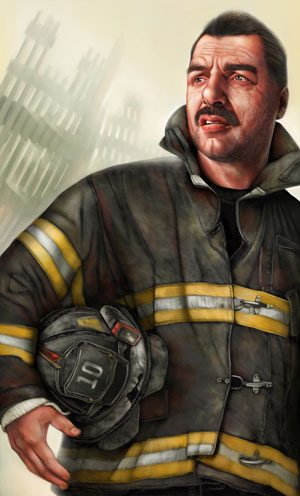

























 H
H



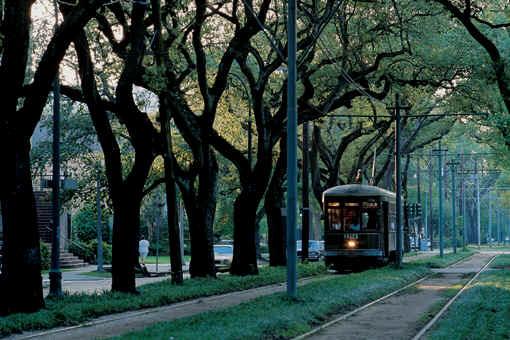











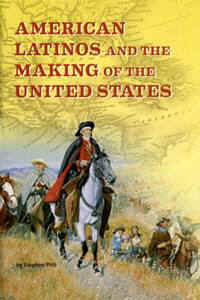






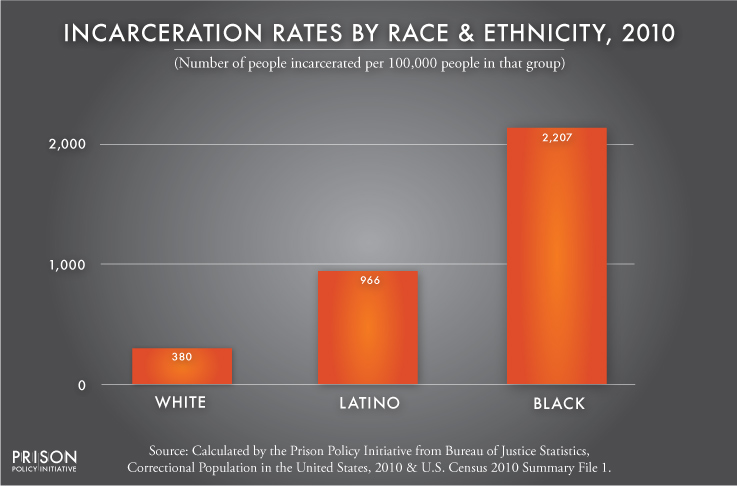

 I am sorry to inform you of the passing of our brother in LULAC, David Adame of Houston, Texas.
David was born in Houston, Texas on April 11, 1918. He graduated from high school in May of 1937 and joined the Civilian Conservation Core in Linden, Texas. David fought in the Pacific theatre in World War II. During his time in the United States Army, David was trained as a Military Police Officer; he was additionally trained in Post Exchange Operations.
I am sorry to inform you of the passing of our brother in LULAC, David Adame of Houston, Texas.
David was born in Houston, Texas on April 11, 1918. He graduated from high school in May of 1937 and joined the Civilian Conservation Core in Linden, Texas. David fought in the Pacific theatre in World War II. During his time in the United States Army, David was trained as a Military Police Officer; he was additionally trained in Post Exchange Operations. 






 Here is Mercy with her oldest granddaughter Crystal Mercymarie
Martinez and her husband Mike Adams. The couple married this past
April.
Here is Mercy with her oldest granddaughter Crystal Mercymarie
Martinez and her husband Mike Adams. The couple married this past
April.


 Almost
50 years later, the Nevada State Museum Las Vegas, in
collaboration with the Nevada Arts Councils Folklife
Program, will display his collection of traditional southern
Mexican attire in the first-ever Flores Familiares
(Family Flowers) embroidery exhibit beginning today.
Almost
50 years later, the Nevada State Museum Las Vegas, in
collaboration with the Nevada Arts Councils Folklife
Program, will display his collection of traditional southern
Mexican attire in the first-ever Flores Familiares
(Family Flowers) embroidery exhibit beginning today.








 I
was born in a family of landless peasants, in Azinhaga, a small village
in the province of Ribatejo, on the right bank of the Almonda River,
around a hundred kilometres north-east of Lisbon. My parents were José
de Sousa and Maria da Piedade. José de Sousa would have been my own
name had not the Registrar, on his own initiative added the nickname by
which my father's family was known in the village: Saramago. I should
add that saramago is a wild
herbaceous plant, whose leaves in those times served at need as
nourishment for the poor. Not until the age of seven, when I had to
present an identification document at primary school, was it realized
that my full name was José de Sousa Saramago...
I
was born in a family of landless peasants, in Azinhaga, a small village
in the province of Ribatejo, on the right bank of the Almonda River,
around a hundred kilometres north-east of Lisbon. My parents were José
de Sousa and Maria da Piedade. José de Sousa would have been my own
name had not the Registrar, on his own initiative added the nickname by
which my father's family was known in the village: Saramago. I should
add that saramago is a wild
herbaceous plant, whose leaves in those times served at need as
nourishment for the poor. Not until the age of seven, when I had to
present an identification document at primary school, was it realized
that my full name was José de Sousa Saramago...
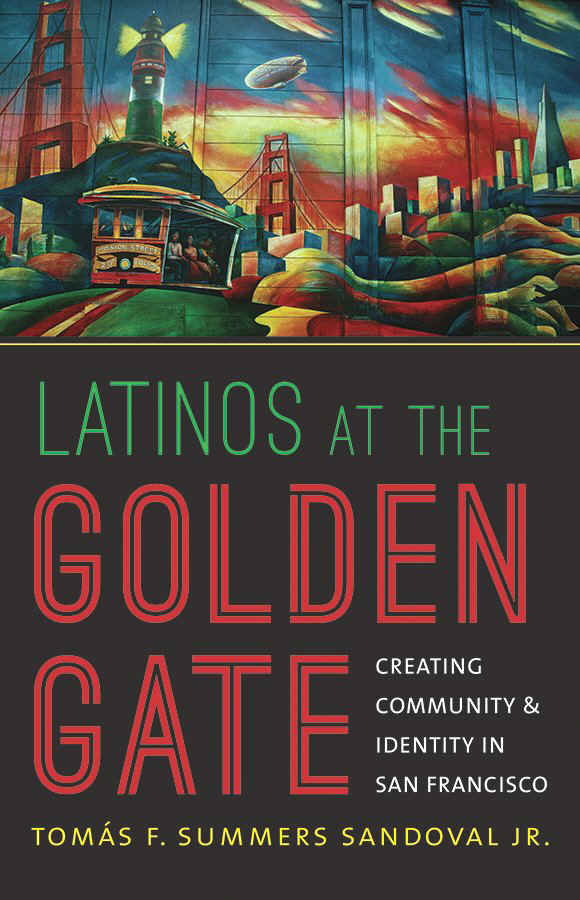


 Most
people know my father, Dr. Hector P. Garcia to be a serious man
dealing with grave matters of human rights.
Most
people know my father, Dr. Hector P. Garcia to be a serious man
dealing with grave matters of human rights.








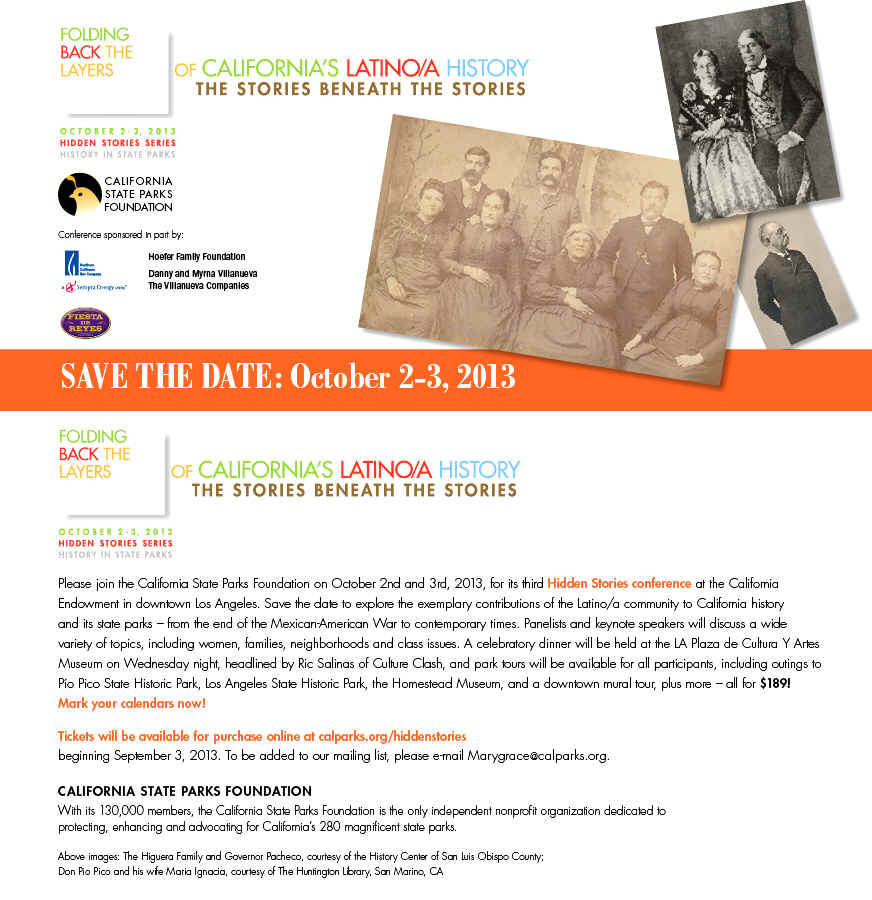




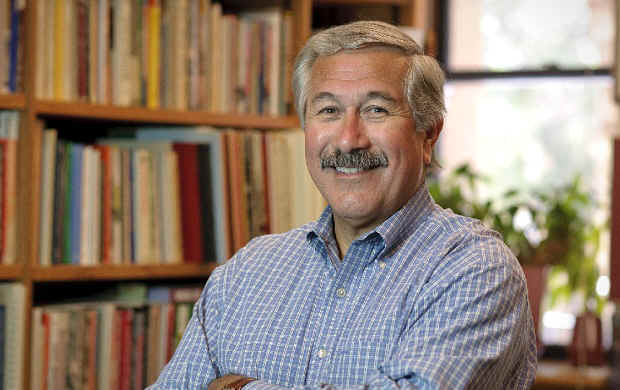



 I
I Monica
Campbell is the Worlds' immigration editor/reporter. She is based
in San Francisco and has reported for the World from Mexico, Cuba,
Portugal and Afghanistan, & California.
Monica
Campbell is the Worlds' immigration editor/reporter. She is based
in San Francisco and has reported for the World from Mexico, Cuba,
Portugal and Afghanistan, & California.














 Autumn Leaves. et
me attach
the U-tube
rendition of
this song
magnificently
sung by Nat
King Cole in
English It
was a French
music
composed
Autumn Leaves. et
me attach
the U-tube
rendition of
this song
magnificently
sung by Nat
King Cole in
English It
was a French
music
composed 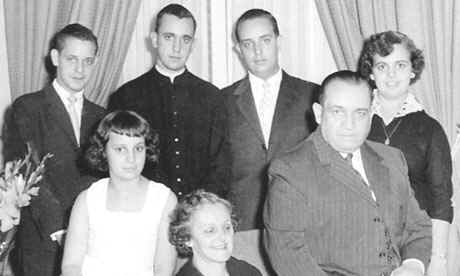

 The
two streets on Central Avenue were closed because of an Ecuadorian
fiesta held on the street.The Ecuadorian group had acquired permit from
the city of Minneapolis to close two blocks of Central Avenue for this
very important occasion. I was very surprised when one cooking
establishment on the cordoned street was roasting miniature pigs
on sticks like the typical Lechon Asado (roasted pigs) which were
less than a foot long. The Lechon Asado is also very popular in my
country during festivities including marriage, baptism, confirmation,
birthday celebration, feast of the saints, etc. We Filipinos plainly
call it Lechon while the Latin Americans call it Lechon Asado.
Here is a pictures of a Lechon Asado:
The
two streets on Central Avenue were closed because of an Ecuadorian
fiesta held on the street.The Ecuadorian group had acquired permit from
the city of Minneapolis to close two blocks of Central Avenue for this
very important occasion. I was very surprised when one cooking
establishment on the cordoned street was roasting miniature pigs
on sticks like the typical Lechon Asado (roasted pigs) which were
less than a foot long. The Lechon Asado is also very popular in my
country during festivities including marriage, baptism, confirmation,
birthday celebration, feast of the saints, etc. We Filipinos plainly
call it Lechon while the Latin Americans call it Lechon Asado.
Here is a pictures of a Lechon Asado: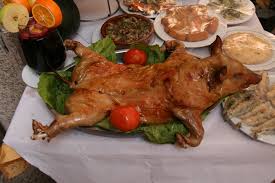



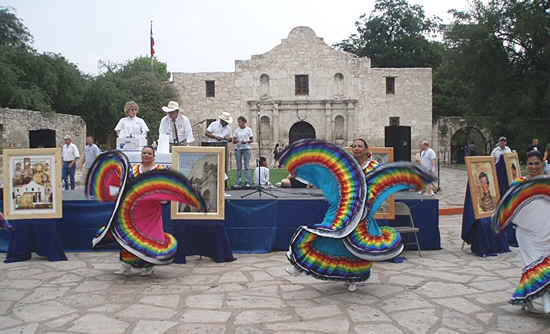






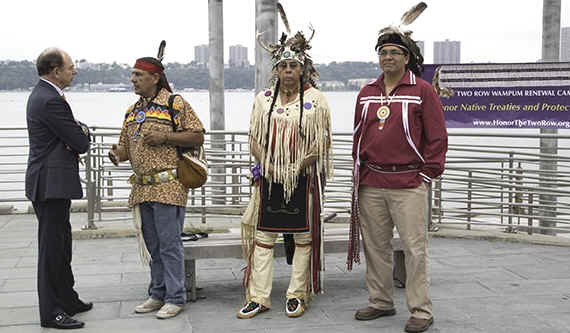 The
history of Native Americans is still alive and ongoing, and the
Iroquois Confederacy, or Haudenosaunee, wants you to remember that.
On Friday, August 9 th, their chiefs met with the Dutch
Consul General on the 57th Street Pier in Manhattan to
honor the 400th Anniversary of their 1613 treaty with the
Kingdom of the Netherlands. It was the culmination of a thirteen-day
paddle down the Hudson River, with daily stops where tribe members
and supporters held cultural events and lectures, and invited locals
to listen to traditional music and dance. The goal: not just to
raise consciousness over land rights--suits for which have been
uniformly unsuccessful in recent years--but to build support for
enforcing treaties between natives and settlers for the purposes of
environmental conservation, as well.
The
history of Native Americans is still alive and ongoing, and the
Iroquois Confederacy, or Haudenosaunee, wants you to remember that.
On Friday, August 9 th, their chiefs met with the Dutch
Consul General on the 57th Street Pier in Manhattan to
honor the 400th Anniversary of their 1613 treaty with the
Kingdom of the Netherlands. It was the culmination of a thirteen-day
paddle down the Hudson River, with daily stops where tribe members
and supporters held cultural events and lectures, and invited locals
to listen to traditional music and dance. The goal: not just to
raise consciousness over land rights--suits for which have been
uniformly unsuccessful in recent years--but to build support for
enforcing treaties between natives and settlers for the purposes of
environmental conservation, as well.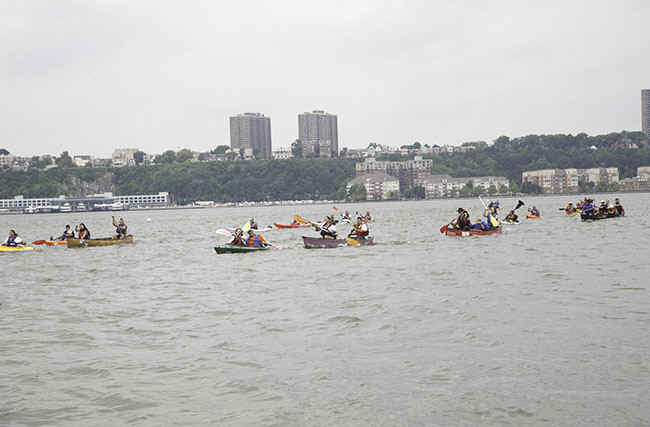 On
the final day of the demonstration, the pier was mobbed with people
waiting to greet the paddlers. There were hundreds of Iroquois; Quakers
who have been lobbying the Senate
On
the final day of the demonstration, the pier was mobbed with people
waiting to greet the paddlers. There were hundreds of Iroquois; Quakers
who have been lobbying the Senate 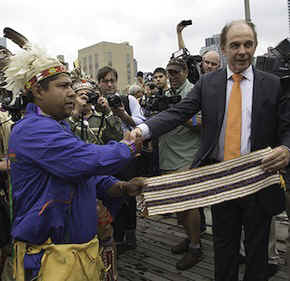 "Without
the help of the Iroquois, the Dutch settlers would have never survived
here," said Dutch Consul General Rob de Vos, who, with Dan Maffei,
Congressman for the Syracuse region, met the paddlers and the nations'
chiefs on the pier. "Let's stay together, listen to each other, and
find solutions for future generations." Each side held one end of
the Two Row Wampum belt, signifying the treaty between the Iroquois and
the Dutch, and having exchanged gifts, the chiefs then smoked a peace
pipe with de Vos.
"Without
the help of the Iroquois, the Dutch settlers would have never survived
here," said Dutch Consul General Rob de Vos, who, with Dan Maffei,
Congressman for the Syracuse region, met the paddlers and the nations'
chiefs on the pier. "Let's stay together, listen to each other, and
find solutions for future generations." Each side held one end of
the Two Row Wampum belt, signifying the treaty between the Iroquois and
the Dutch, and having exchanged gifts, the chiefs then smoked a peace
pipe with de Vos.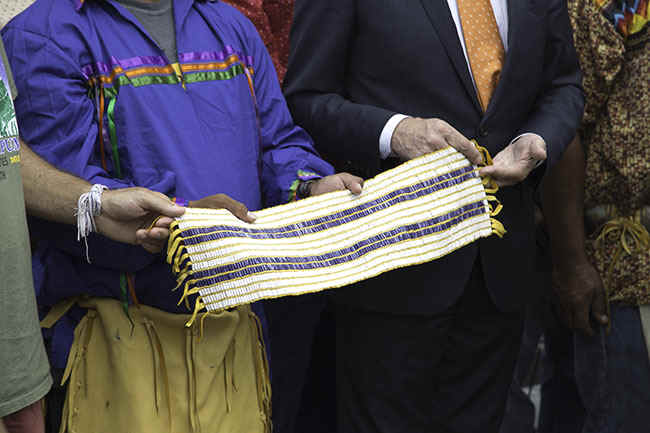 The
Two Row Wampum belt
The
Two Row Wampum belt